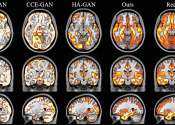AI brain images create realistic synthetic data to use in medical research
An AI model developed by scientists at King's College London, in close collaboration with University College London, has produced three-dimensional, synthetic images of the human brain that are realistic and accurate enough ...
Jul 30, 2024
0
108









